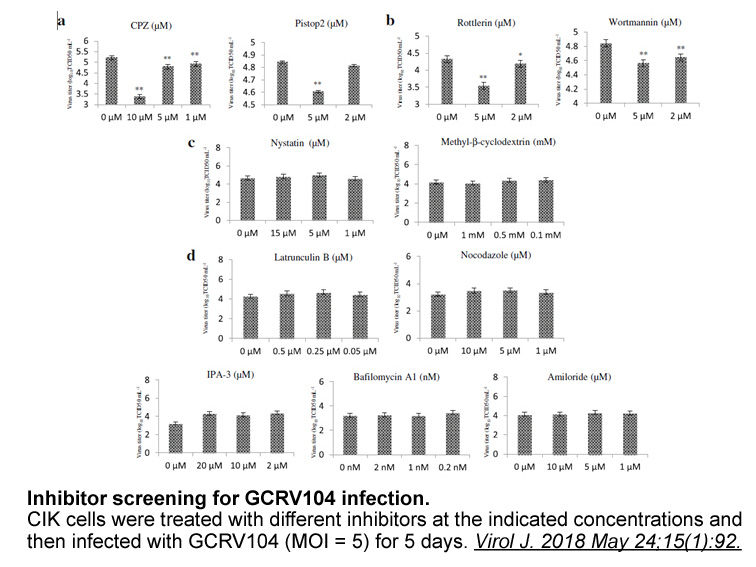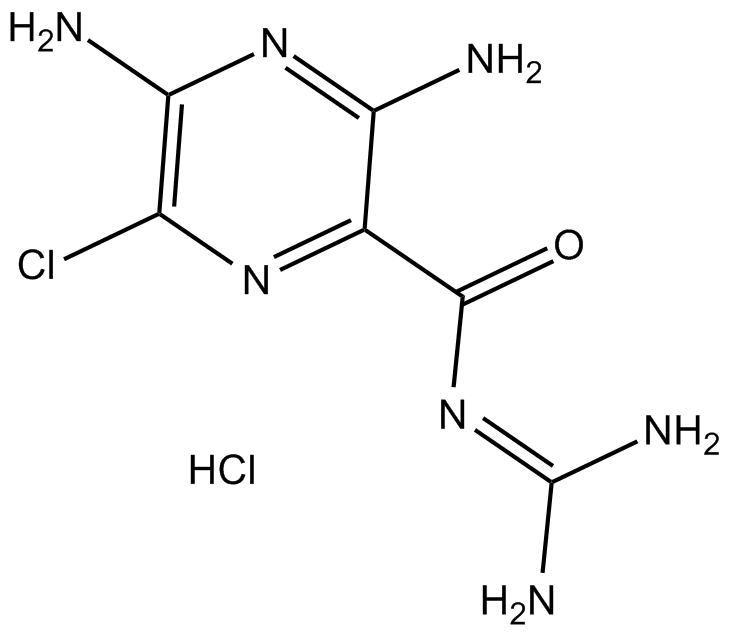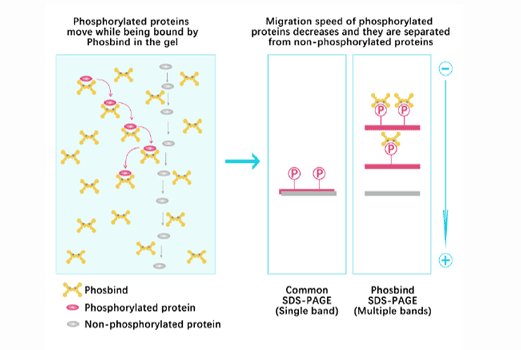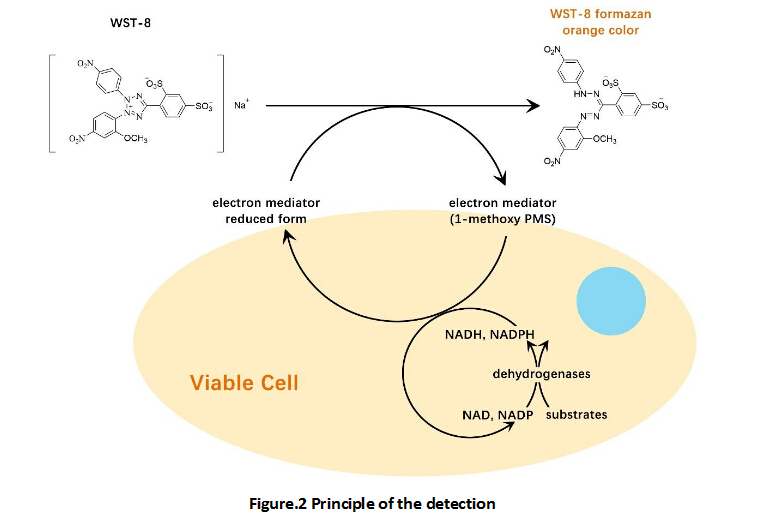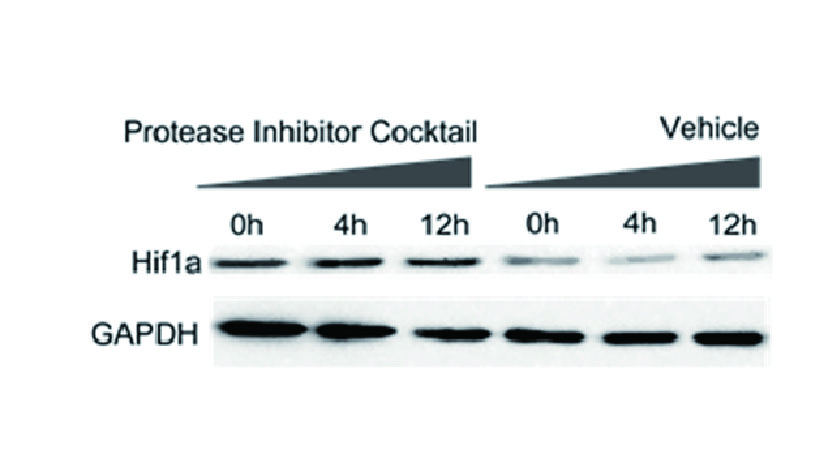Amiloride HCl
The epithelial sodium channel (ENaC) is a membrane-bound ion-channel that is permeable to protons, Li+-ions, and especially Na+-ions. It is a constitutively active ion-channel. It can be argued that it is the most selective ion channel. In vertebrates, the channels control reabsorption of sodium in kidney, colon, lung and sweat glands. They also play a role in taste perception. Amiloride is a relatively selective inhibitor of the epithelial sodium channel (ENaC).
In vitro: Amiloride is a relatively poor inhibitor of the the Na+/H+ exchanger (NHE) with an IC50 of 3 μM in the presence of a low external [Na+] but as high as 1 mM in the presence of a high [Na+]. Amiloride completely inhibits Na+ influx in doses of 1.5 μM in vascular smooth muscle cells [1].
In vivo: Amiloride at 1 mg/kg/day is found to reverse the initial increases in collagen deposition and prevent further increases in the DOCA-salt hypertensive rat. Amiloride delays the onset of proteinuria and improved brain and kidney histologic scores in the stroke-prone spontaneously hypertensive rats. Amiloride antagonizes or prevents actions of aldosterone in cardiovascular and renal tissues in animals with salt-dependent forms of hypertension [1].
Clinical trial: Amiloride is a potassium-sparing diuretic, first approved for use in 1967, used in the management of hypertension and congestive heart failure. Amiloride was also tested as treatment of cystic fibrosis, but it was revealed inefficient in vivo due to its short time of action.
Reference:
[1] Teiwes J, Toto RD. Epithelial sodium channel inhibition in cardiovascular disease. A potential role for amiloride. Am J Hypertens. 2007 Jan;20(1):109-17.
- 1. Xiaohai Song, Hao Cai, et al. "Enzyme‐Responsive Branched Glycopolymer‐Based Nanoassembly for Co‐Delivery of Paclitaxel and Akt Inhibitor toward Synergistic Therapy of Gastric Cancer." Adv Sci (Weinh). 2023 Nov 12:e2306230. PMID: 37953442
- 2. Yuxin Zhang, Jie Zhou, et al. "Modulating tumor-stromal crosstalk via a redox-responsive nanomedicine for combination tumor therapy." J Control Release. 2023 Apr:356:525-541. PMID: 36918084
- 3. Zhou J, Ma S, et al. "Virus-Inspired Mimics: Dual-pH-Responsive Modular Nanoplatforms for Programmable Gene Delivery without DNA Damage with the Assistance of Light." ACS Appl Mater Interfaces. 2020;12(20):22519-22533. PMID:32329598
- 4. Wang H, Liu W, et al. "Inhibitor analysis revealed that clathrin-mediated endocytosis is involed in cellular entry of type III grass carp reovirus." Virol J. 2018 May 24;15(1):92. PMID:29793525
| Physical Appearance | A solid |
| Storage | Store at -20°C |
| M.Wt | 266.09 |
| Cas No. | 2016-88-8 |
| Formula | C6H8ClN7O·HCl |
| Solubility | ≥13.3 mg/mL in DMSO; ≥2.48 mg/mL in H2O with ultrasonic; ≥2.57 mg/mL in EtOH with ultrasonic |
| Chemical Name | 3,5-diamino-6-chloro-N-(diaminomethylidene)pyrazine-2-carboxamide;hydrochloride |
| SDF | Download SDF |
| Canonical SMILES | NC(N)=NC(c(nc1Cl)c(N)nc1N)=O.Cl |
| Shipping Condition | Small Molecules with Blue Ice, Modified Nucleotides with Dry Ice. |
| General tips | We do not recommend long-term storage for the solution, please use it up soon. |
Quality Control & MSDS
- View current batch:
Chemical structure
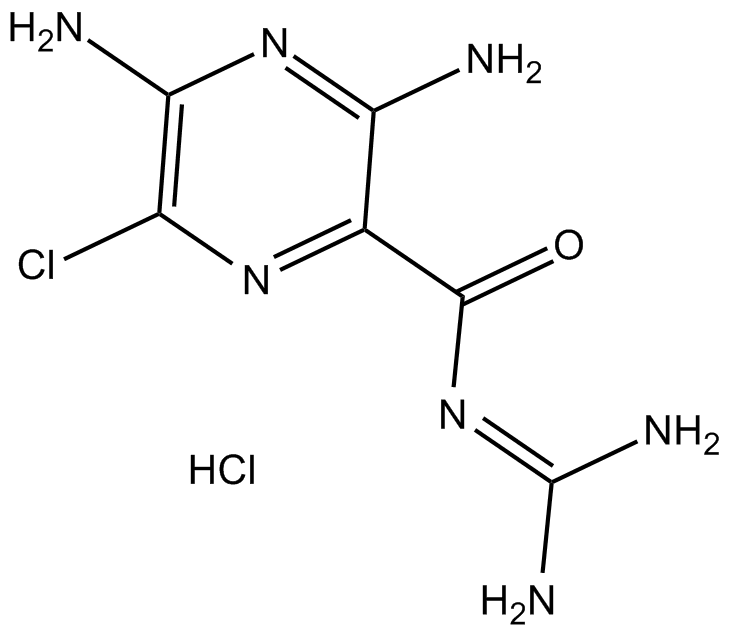
Related Biological Data
